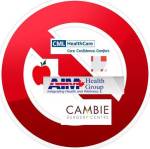Ontario’s budget debate may be high profile, but it misses two essential points.
With the NDP signaling NO TAX INCREASES (on the middle class) a serious discussion about taxes, particularly the need to increase corporate and wealth taxes, will not take place. It is hard to have any serious budget discussion without considering the income side. Many commentators have made this point.
At the same time, the expanding use of for-profit companies, often multinational conglomerates, to deliver and finance public services, is being ignored. The negative impact of private delivery on cost, quality, accessibility and democratic control of public services has been well documented and may be the most destructive government expense.
The exact amount transferred to for-profit corporations is unknown. This secrecy, by itself, is a strong democratic argument against the use of private companies. Yet, a quick look at the public accounts for the Ministry of Health shows well over one quarter of that budget is paid directly to private for-profit companies. The easy pickings for large payments to for-profit providers in health care are:
Pharmaceuticals – 4.6 Billion Dollars
Only about 2% of the Ontario Drug Programs budget is used for administration. The rest is transferred to large drug store chains and then much from there to the pharmaceutical conglomerates. The $4.6 billion figure includes $414.5 million that is paid to hospitals, Cancer Care Ontario and the Trillium drug plan which is also primarily transferred to ‘Big Pharma’.
Long Term Care (LTC) – 2 Billion Dollars
The Canadian Union of Public Employees estimates that in 2010 fifty-three percent of LTC beds were in for-profit facilities. $2 billion is low because some of the non-profit homes contract services like food preparation, cleaning and maintenance to private health care conglomerates.
Capital expenses – 1.3 Billion Dollars
Most of the $1.46 billion in the Health Capital account to build, finance, maintain, operate and/or renovate hospitals will be transferred to consortiums of multinational companies or to large private contractors.
Home care – 1.2 Billion Dollars
The Ontario Association of Community Care Access Centers says that 91.3% of the home care budget is spent on direct patient care of which the Ontario Health Coalition estimates 58% of nursing care and 64% of personal support services are provided by for-profit companies.
Medical laboratories – 680 Million Dollars
Over 93% of the medical laboratory services outside of hospitals in Ontario are provided by three multinational corporations. Ontario based for-profit companies provide the rest.
Independent Health Facilities (IHF) – 396 Million Dollars
97% of IHFs in Ontario are for-profit companies.
Physiotherapy, Assisted Devices and Home O2 – 598 Million Dollars
Community physiotherapy services, the Assisted Devices Program and home oxygen providers are primarily for-profit.
eHealth – 291 Million Dollars
The 2010-11 eHealth Annual Report says that 80% of their budget is transferred to public-private-partnerships, in other words paid to large for-profit companies.
Hospitals, Primary Care and Multimillion Dollar Incidentals
Hospitals and primary care are still nominally non-profit. However, significant portions of both their expenses go to for-profit corporations (usually very large ones). Hospitals often contract out cleaning, security, food services, information technology and maintenance. Temporary agencies supply nurses. Consultants and management services are regularly hired.
For-profit chains increasingly provide urgent care services and physician offices. These chains are paid from a percentage of the physician’s billings to the government. Management companies, IT firms and temporary help agencies also receive money from the primary care budget.
Then there are a variety of isolated payments from the Ministry of Health to private corporations: for example, the $56 million paid to IBM and the $35.6 million paid to Sykes International. The Community and Priority Services Program, with a $638 million budget, uses a number of private corporations. And the list could go on – the Ministry of Health’s budget is large and complicated.
In addition to the $11.1 billion itemized above, hospitals, primary care and incidentals probably account for billions more public health care dollars transferred annually to for-profit companies.
The use of for-profit companies is not a small problem even in this single case of the Ministry of Health. Two provincial budget provisions would increase accountability, limit further damage and require no party to directly confront the existing problem of for-profit provision.
1) Detail and publish all payments to private-for-profit corporations, and,
2) Prohibit new use of for-profit providers.
A serious debate on these suggestions would help bring the current budget bargaining back to the big issues facing Ontario’s finances: taxes and private delivery of essential services.

